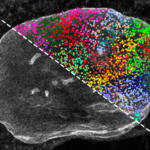Data from a new study in mice shows that a common sleep aid protects the brain from damage seen in neurodegenerative disorders, in addition to improving rest. Specifically, scientists from Washington University School of Medicine in St. Louis (WashU Medicine) and their collaborators elsewhere found that lemborexant and similar drugs may prevent the harmful buildup of tau protein, which is associated with the development of diseases like Alzheimer’s, progressive supranuclear palsy, corticobasal syndrome, and some frontotemporal dementias.
Full details of the study are provided in a new Nature Neuroscience paper titled, “Lemborexant ameliorates tau-mediated sleep loss and neurodegeneration in males in a mouse model of tauopathy.”
“We have known for a long time that sleep loss is a risk factor for Alzheimer’s disease,” said David Holtzman, MD, senior author on the paper and a distinguished professor of neurology at WashU Medicine. “The antibodies to amyloid that we now use to treat patients with early, mild Alzheimer’s dementia are helpful, but they don’t slow the disease down as much as we would like. We need ways to reduce the abnormal tau buildup and its accompanying inflammation, and this type of sleep aid is worth looking at further.”
In past work studying mice that are genetically prone to amyloid and tau buildup, Holtzman and his team showed that sleep deprivation worsened protein buildup. In the current study, they tested the effect of lemborexant, in part because it has effects in parts of the brain known to be affected by abnormal tau accumulation. They also selected this particular drug because it does not impair motor coordination, which is a concern for people with dementia taking hypnotic sleep aids.
The pharmaceutical company Eisai provided lemborexant for this and other studies as part of a research collaboration with WashU Medicine focused on developing innovative treatments for Alzheimer’s disease, Parkinson’s disease, and other neurodegenerative diseases.
Lemborexant is one of three sleep drugs approved by the FDA that inhibit the effect of orexins, small proteins that regulate sleep, by acting as orexin receptor antagonists. Lemborexant blocks both orexin type 1 and type 2 receptors. These receptors are known to play important roles in sleep-wake cycles and appetite, among other physiological processes.
According to the findings reported in Nature Neuroscience, when mice genetically prone to harmful tau buildup were treated with lemborexant, the drug reduced brain damage compared with control mice. For example, those receiving lemborexant had 30–40% larger volume in the hippocampus compared with control mice and those receiving a different sleep drug, zolpidem, which belongs to a different class of drugs. Zolpidem increased sleep but had none of the protective effects against tau accumulation in the brain that were seen with lemborexant, suggesting that the type of sleep aid—orexin receptor antagonist—is key in producing the neuroprotective effects.
As part of their next steps, the researchers are trying to understand why lemborexant’s neuroprotective effects were only observed in male mice. Holtzman speculated that the sex discrepancy could be because female mice with the same genetic predisposition to tau accumulation developed less-severe neurodegeneration compared with male mice. Since they had less damage to begin with, the potential beneficial effects of the drug in female mice might be smaller and more difficult to detect.
“We are interested in whether going after both amyloid and tau with a combination of therapies could be more effective at slowing or stopping the progression of this disease,” he said. “We are hopeful this finding will lead to further studies of this sleep medication and the development of new therapeutics that may be more effective than current options, either alone or in combination with other available treatments.”



